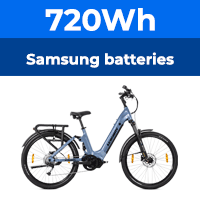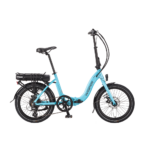D
Deleted member 4366
Guest
While I was experimenting with my double throttle, i had to keep removing the bit you twist while it was switched on. I discovered that without the twistgrip in place, the motor runs at half speed, so I grabbed a magnet from a spare twistgrip and brought it to the hall sensor. When I brought one side of the magnet to either side of the hall, the motor slowed down, and when I turned the magnet over, it speeded up.
All three throttles that I opened had the same arrangement with a south facing magnet and a north facing one about an inch apart with one hard up against the hall to stop the motor, and when you rotate the throttle, the north facing one reaches the hall to give full throttle. 1 mm gap at full throttle makes a difference of about 2mph, which explains why some throttles give more power than others.
The construction of all three was from pretty thin plastic, and a good knock would break any of them. If after the break, the low throttle magnet is not against the hall, your motor will run as long as it's switched on. However, some controllers require a low throttle signal before they give power. So switching off and on will disable it.
That's why brake cut-offs are important!
All three throttles that I opened had the same arrangement with a south facing magnet and a north facing one about an inch apart with one hard up against the hall to stop the motor, and when you rotate the throttle, the north facing one reaches the hall to give full throttle. 1 mm gap at full throttle makes a difference of about 2mph, which explains why some throttles give more power than others.
The construction of all three was from pretty thin plastic, and a good knock would break any of them. If after the break, the low throttle magnet is not against the hall, your motor will run as long as it's switched on. However, some controllers require a low throttle signal before they give power. So switching off and on will disable it.
That's why brake cut-offs are important!







